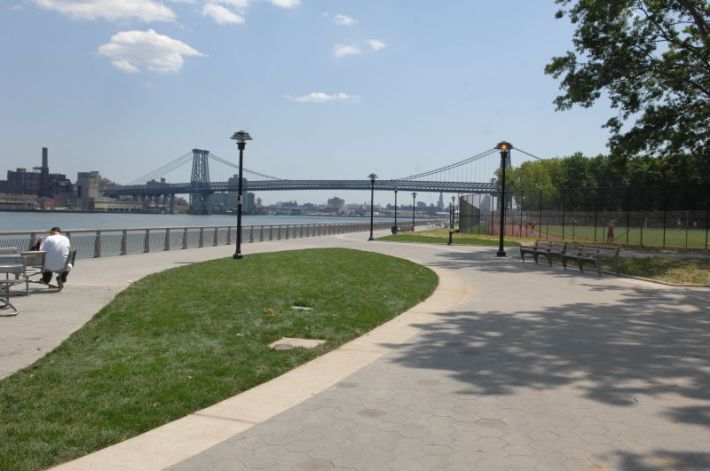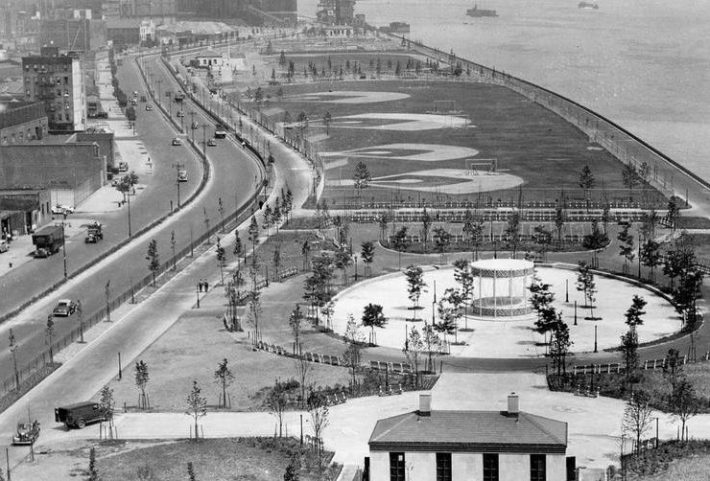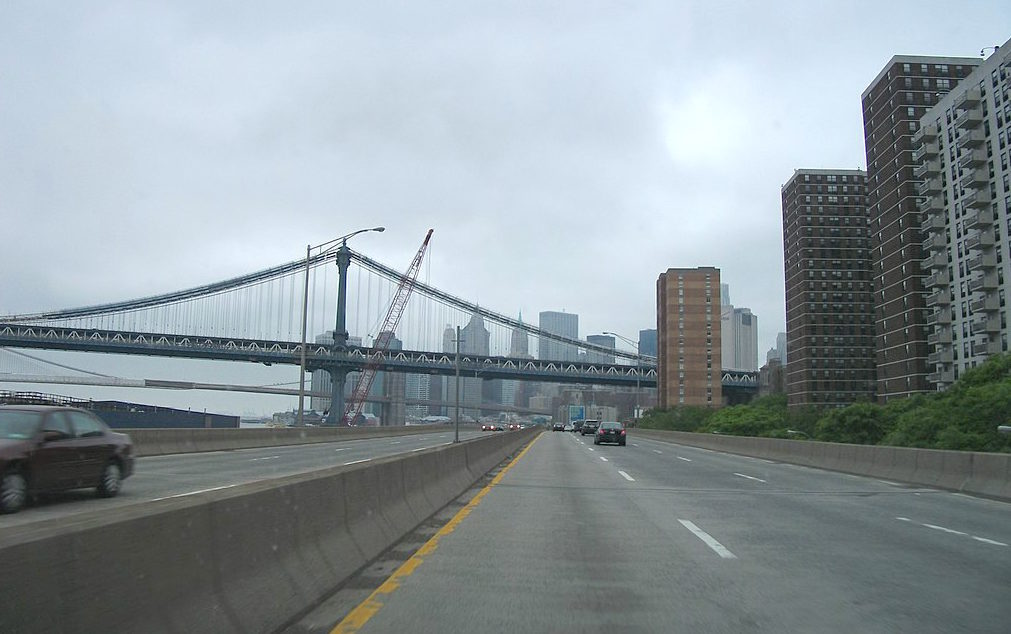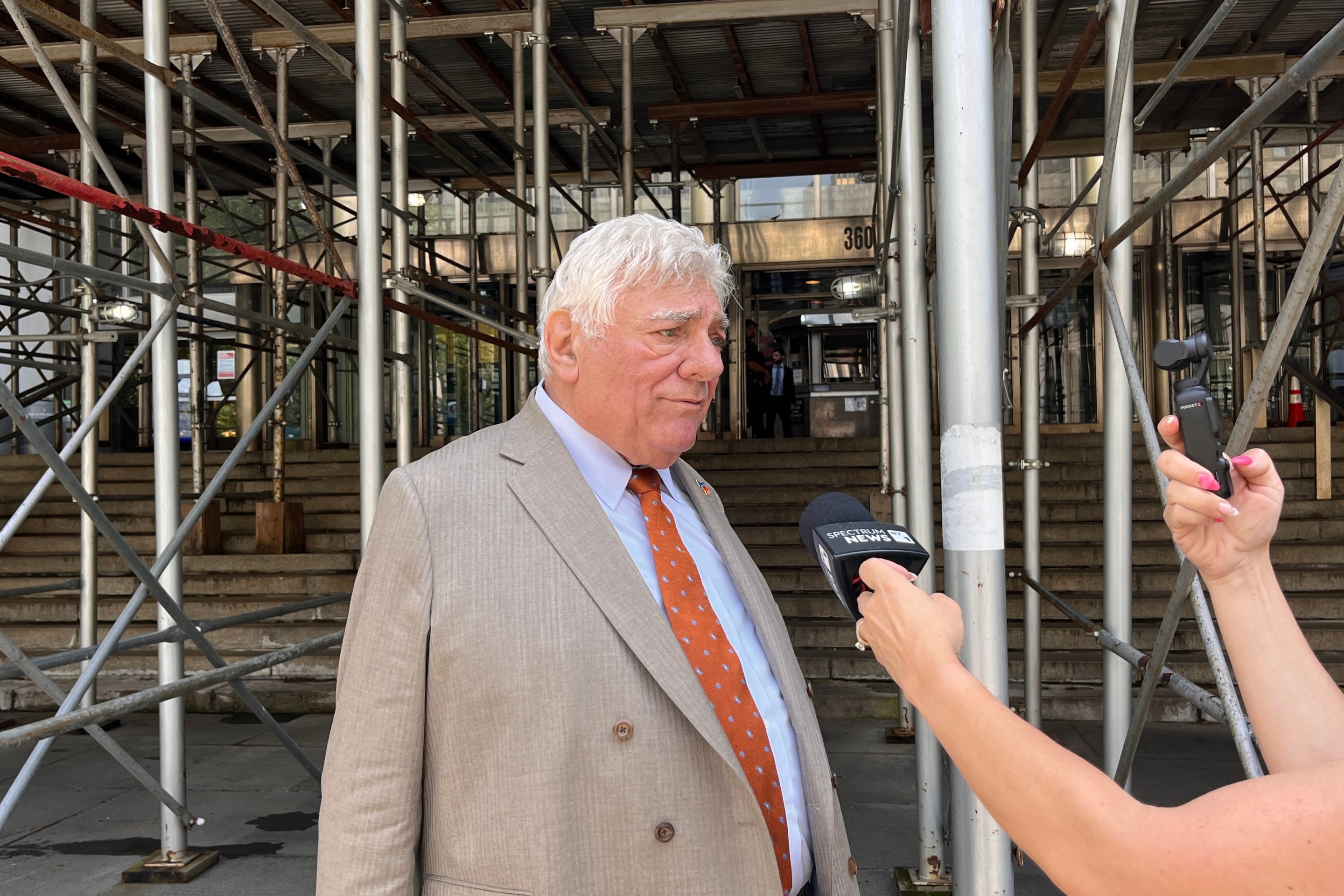So this is "resiliency"?
The city wants to spend $1.5 billion to bulldoze East River Park and cover it with eight to 10 feet of dirt from Montgomery to 23rd streets to prevent climate-change-induced flooding from consuming the Lower East Side and East Village.
But this so-called East River Coastal Resiliency Project has one fatal flaw: It doesn't address the cause of the climate-change-induced flooding, symbolically represented by all those cars flying by on the FDR Drive — a roadway that will operate unimpeded during the four-year construction, by the way.
The plan is moving forward through the public review process now. If New Yorkers organize, however, we can scrap it for something better.

Several alternatives exist. A plan developed by the community some years ago called for building a flood barrier along FDR Drive and decking over the drive itself, thereby expanding East River Park.
I have proposed that we take this plan a step further: let's replace car lanes on the FDR Drive with dedicated bus lanes for clean, environmentally sensitive electric buses that also would better serve residents who live alongside the roadway, far from the subways.

Over the past 10 years, the city has spent more than $150 million in order to renovate East River Park. But one need only stand in the park, next to the FDR, in order to witness the scope of the problem: thousands of cars polluting our environment 24/7.
According to the Environmental Protection Agency, transportation contributes the largest share of greenhouse-gas emissions, 29 percent of the total. If we don’t quickly forestall and reverse this situation, no amount of dirt can be piled high enough to protect our communities from flooding. The time to act is now.

Our crisis is a relic of Robert Moses — and so many other master builders who felt that "progress" could only be achieved on the wheels of automobiles. In the 1930s, Moses designed FDR Drive as an integral element of his new, car-centered vision for New York, but this extravagant vision is a dead-end for our 21st century climate crisis. The FDR provides six lanes of highway for an endless stream of noisy, gas-guzzling cars that carry an average of less than two occupants — meaning that more than half of each vehicle is unoccupied. Amid a climate emergency, why should we continue to enable this extravagance? At the same time, the residents of New York City Housing Authority and other developments along FDR Drive live in a transit desert with limited bus service and subways too distant for easy access.
By substituting electric buses for cars, we can shrink the FDR from six lanes to three while providing room to build a flood wall without interfering with utility lines — a key city objective.
A plan that fuses resiliency, sustainability and transportation equity is the essence of a Green New Deal for Lower Manhattan, and could serve as a model for many shoreline communities.
Time is short. The UN’s Intergovernmental Panel on Climate Change says we have about 10 years to make dramatic reductions in greenhouse-gas emissions or face dire consequences. By narrowing the FDR and devoting two to three lanes to electric buses, we can do something that will have a real effect on climate change and flood protection.
But it won’t happen without us and without a new vision for New York. Now is the time to create a real plan for survival. If we fail to act, a degraded nature will implement its own plan, and we are sure not to like it.
Manhattan Borough President Gale Brewer, who has tried to delay the plan, is holding a public hearing on Wednesday at 6 p.m. (details below). I urge all New Yorkers to go and register their dissent and demand that the city form a commission with community participation before embarking on any project, in order to study alternatives to destroying our park.
Howard Brandstein, a longtime Lower East Side resident, is the executive director of the Sixth Street Community Center. Information about the borough president’s meeting is here.






